Walking the Rainbow Bridge: Tokyo’s Most Spectacular Urban Trek
From Shinbashi Station to Shibaura Pier


Begin your journey at the Yurikamome Line’s Shinbashi Station, conveniently located adjacent to JR Shinbashi Station. Board the futuristic automated train and disembark at Shibaura Pier Station – just a 7-minute ride and ¥260 fare away.
After exiting the Shibaura Pier Station ticket gates, take the staircase on your left and walk approximately 200 meters until you spot the welcoming “Rainbow Bridge Promenade” sign. Turn left here and follow the path for another 100 meters until you reach a distinctive brown building – the Rainbow Bridge Management Office.


Choosing Your Path: North Route vs. South Route

Inside the management office, follow the floor arrows to the elevators, where you’ll face your first decision: 2nd floor for the North Route or 7th floor for the South Route. Both pathways stand 52 meters above sea level, but offer dramatically different perspectives.
The North Route showcases Tokyo’s magnificent skyline – a forest of skyscrapers including glimpses of Tokyo Tower and, near the exit, Tokyo Skytree. These towering structures appear even more impressive in person than in photographs, creating an overwhelming sense of urban grandeur. The only drawback? The scenery remains somewhat consistent throughout.


The South Route presents a more subtle beauty. While less immediately dramatic, it offers constantly changing vistas: harbors, passing ships, small islands dotted with seabirds, and the expansive Tokyo Bay. When asked which I recommend, I typically suggest the North Route – though today, we’ll explore the South.
The South Route Experience
The Rainbow Bridge stretches 1.7 kilometers (roughly one mile), but the complete journey from Shibaura Pier Station to Odaiba Seaside Park spans approximately 2.5 kilometers. Taking my time to absorb the surroundings, I completed the trek in about an hour.

As you walk, you’ll notice the Yurikamome Line tracks running parallel to your path on one side, with another roadway beyond. The North Route runs along the opposite edge of the bridge.
Rest Stops and Instagram-Worthy Views
The walkway features four designated rest areas that double as perfect photo spots. While most of the path is lined with narrow metal grilles that make photography challenging, these rest areas offer wider openings ideal for capturing the spectacular views.


Arriving at Odaiba
As you approach the end of your journey, Odaiba comes into view, dominated by Fuji Television’s distinctive spherical observation deck. Consider visiting this paid viewing platform for a reverse perspective of the route you’ve just traversed.

After walking in a straight line for most of the journey, the path curves right and begins to descend. Here, you’ll leave the covered section of the walkway and feel the open sky above. Once you’ve completed the descent, you’ll arrive at Seaside Park. Note that just before the curve, there’s a connecting passage to the North Route if you’re curious about the alternative view.
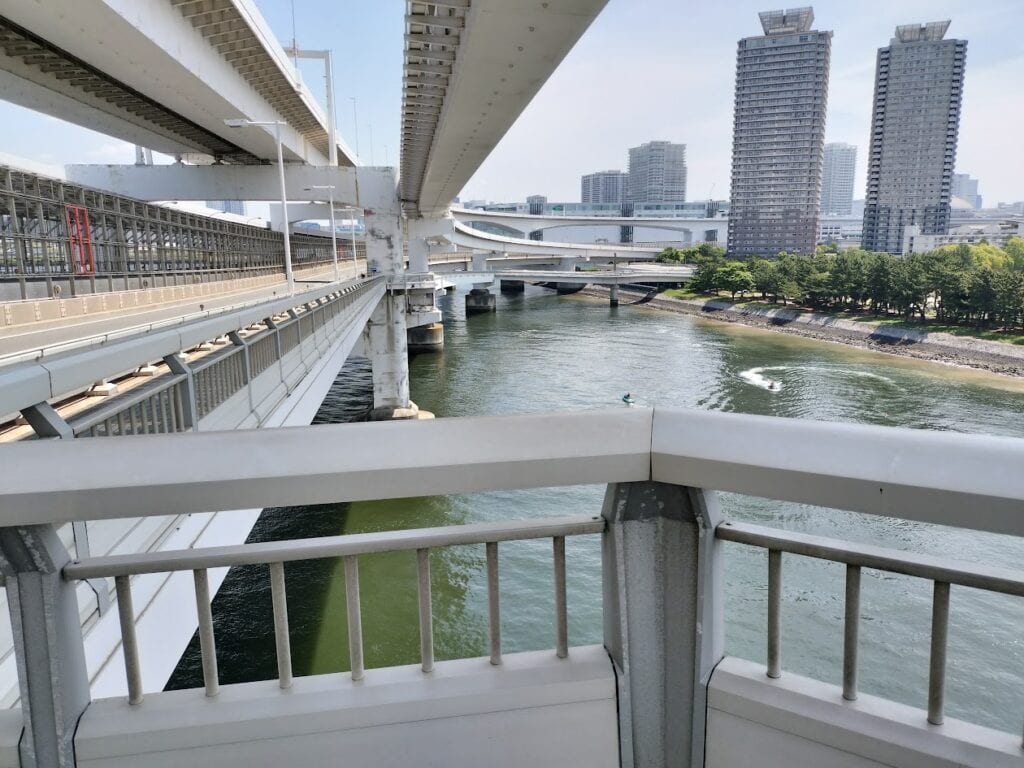
My Personal Experience: Mid-May 2025
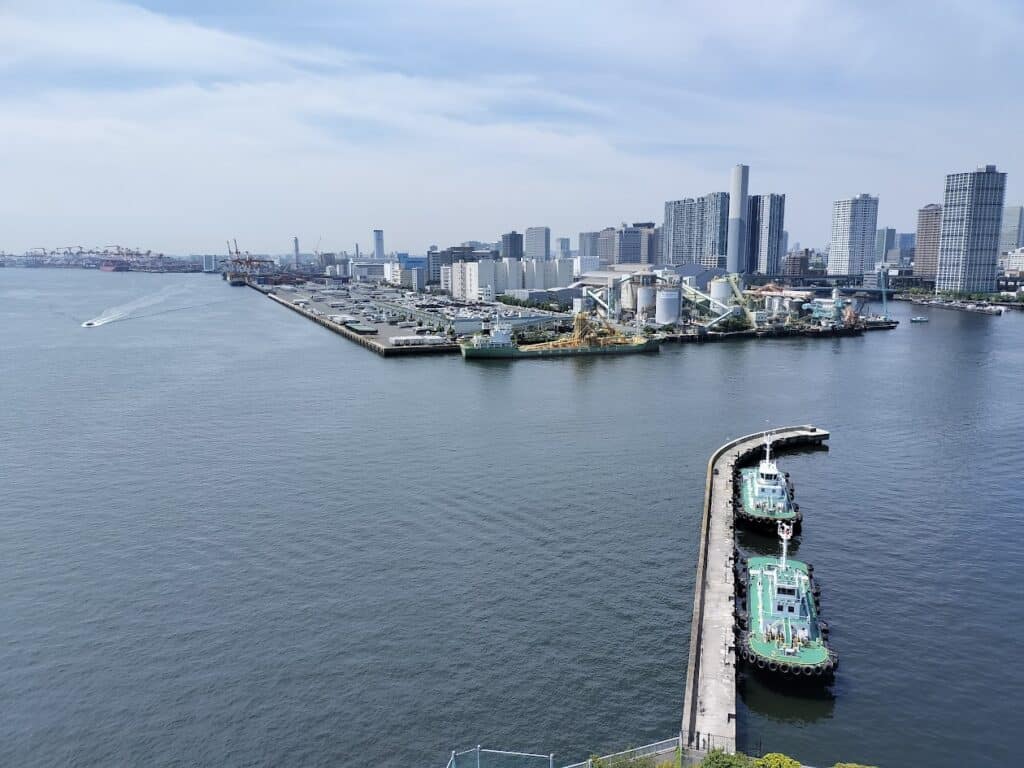
I crossed the Rainbow Bridge on a mid-May morning in 2025, and the conditions were surprisingly comfortable. Despite the outside temperature hovering around 25°C (77°F), the ocean breeze created a perfectly balanced microclimate on the bridge.
Time of Day: 10:00-11:00 AM, which proved to be an excellent choice. The morning light enhanced visibility while avoiding the stronger midday sun.
Weather Conditions: Clear skies with a constant refreshing sea breeze that made the walk exceptionally pleasant.
Recommended Attire: I wore jeans, a T-shirt, and a light windbreaker – the ideal combination. The windbreaker wasn’t necessary for warmth but provided protection from the occasional stronger gusts. Despite the moderate city temperatures, I never felt hot during the crossing thanks to the natural air conditioning of Tokyo Bay.
This mid-spring morning timeslot offered the perfect balance – warm enough to be comfortable, yet cool enough with the sea breeze to make the walk energizing rather than exhausting. The relatively low humidity of May also contributed to the overall comfort level.
A Surprisingly Secret Gem
During my entire 60-minute crossing, I encountered remarkably few people – just two individuals coming from the opposite direction, a group of three who overtook me, and one person resting at a viewpoint. Surprisingly, I didn’t spot any foreign tourists, suggesting this might be an undiscovered treasure for international visitors. My crossing took place between 10 AM and 11 AM.
Essential Rainbow Bridge Information
Opening Hours: 9:00 AM – 9:00 PM (November to March: 10:00 AM – 6:00 PM)
Closure Days: Third Monday of each month (or the following day if the Monday is a holiday) Emergency closures during typhoons or severe weather
Admission Fee: Free
Best Seasons for Your Rainbow Bridge Walk
The Rainbow Bridge promenade offers distinctly different experiences depending on when you visit. For the ultimate walking experience, timing is everything:
Spring (March-May): Perhaps the ideal season, with mild temperatures and gentle sea breezes. Cherry blossom season (late March to early April) adds a magical dimension as you can spot pink blooms dotting the shoreline. The clear spring skies also maximize visibility for those panoramic city views.
Autumn (October-November): Another prime time for this urban trek. The comfortable temperatures and crisp air provide exceptional clarity for photography. The autumn light casts a golden glow over the Tokyo skyline during late afternoon walks, creating breathtaking photo opportunities.
Summer (June-September): Summer visits are best planned for early morning (around sunrise) or evening (sunset and after). The covered walkway provides some shade, but the midday sun can be intense. The evening hours offer spectacular views of Tokyo’s illuminated skyline and the colorful Rainbow Bridge lights.
Winter (December-February): For the adventurous only. On calm, sunny winter days, the crystal-clear visibility offers the most spectacular views of Mt. Fuji from the South Route. However, be prepared for biting winds across the exposed bridge – layers, gloves, and a windproof jacket are essential. The upside? You’ll likely have the entire promenade to yourself.
Sunset Timing: Regardless of season, timing your walk to coincide with sunset creates a magical experience as you witness Tokyo’s transformation from day to night. Check local sunset times and plan to be midway across the bridge as the sun dips below the horizon.
Weather Considerations: Always check the forecast before setting out. The bridge promenade closes during severe weather, and rain significantly diminishes the experience with reduced visibility and slippery walkways.
The Reverse Route Option
It’s entirely possible to cross from Odaiba back to Shibaura Pier, though this direction presents additional challenges. The nearest station in Odaiba (Odaiba Kaihinkoen Station) is about a 15-minute walk from the bridge entrance, compared to just 4-5 minutes from Shibaura Pier Station. Additionally, you’ll begin your journey by ascending the curved slope you descended when traveling in the opposite direction.
Extending Your Adventure: Nearby Attractions
Odaiba Highlights

Odaiba offers numerous attractions to extend your adventure. For entertainment, head to Decks Tokyo Beach; for shopping, Diver City Tokyo Plaza can’t be missed. Don’t forget to visit the world-famous, life-sized Gundam statue (standing an impressive 19.7 meters tall) in front of Diver City.
Seaside Park features a replica of the Statue of Liberty, erected in 1998 as a symbol of French-Japanese friendship. At one-seventh the size of the New York original, it still makes for an impressive sight against the Tokyo skyline.
Water Bus Adventure

From Seaside Park, you can board a water bus to Asakusa for ¥1,000 per adult. The 40-minute journey up the Sumida River offers glimpses into authentic local life and traditional neighborhoods.
Toyosu Market

From Odaiba, take the Yurikamome to Shijo-mae Station (13 minutes, ¥330) to visit Japan’s premier fish market, Toyosu. Here, Tokyo’s top chefs source their ingredients, and visitors can enjoy incredibly fresh and affordable delicacies. Note that most establishments close between 1:00 PM and 2:30 PM, so aim for breakfast or an early lunch. For the authentic experience, visit the original establishments that relocated from Tsukiji, rather than the newer restaurants that remain open later.
teamLab Planets
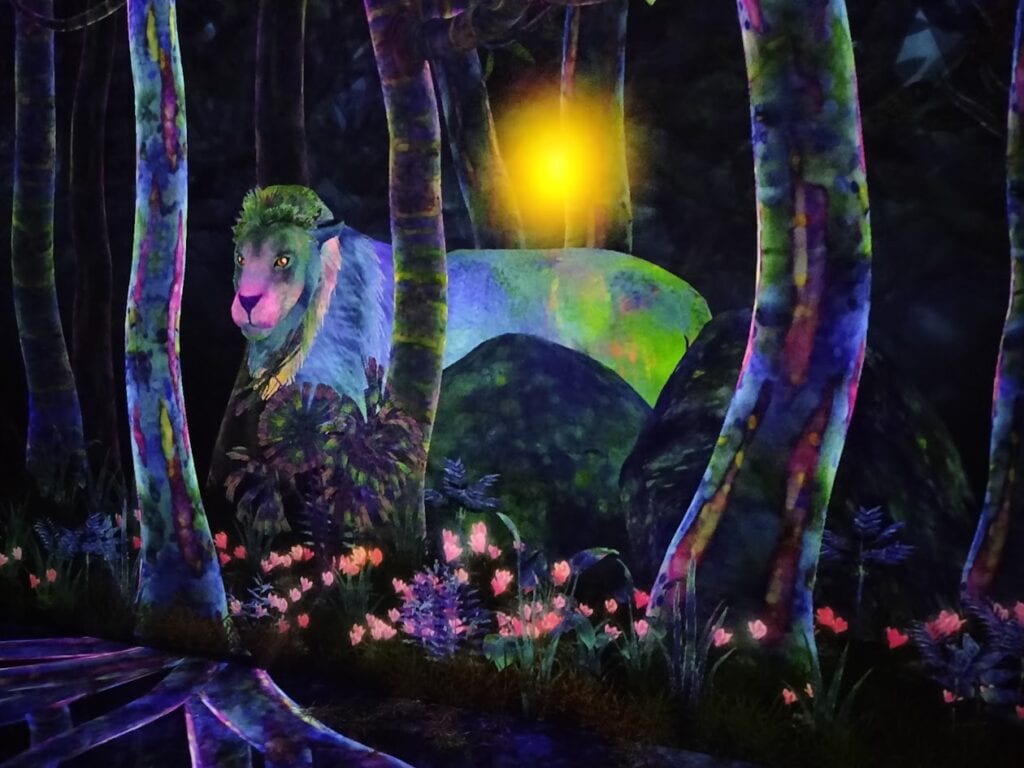
This immersive art museum has shattered world records for annual attendance and was recognized by the prestigious World Travel Awards as “Asia’s Leading Tourist Attraction” in 2023 – beating iconic sites like Angkor Wat and the Great Wall of China. Combining a Rainbow Bridge walk, lunch at Toyosu Market, and an afternoon at teamLab Planets makes for an extraordinary Tokyo day that few travelers experience. It is just one stop from Shijyo-mae monorail station or 5-minute walk from Toyosu Market.

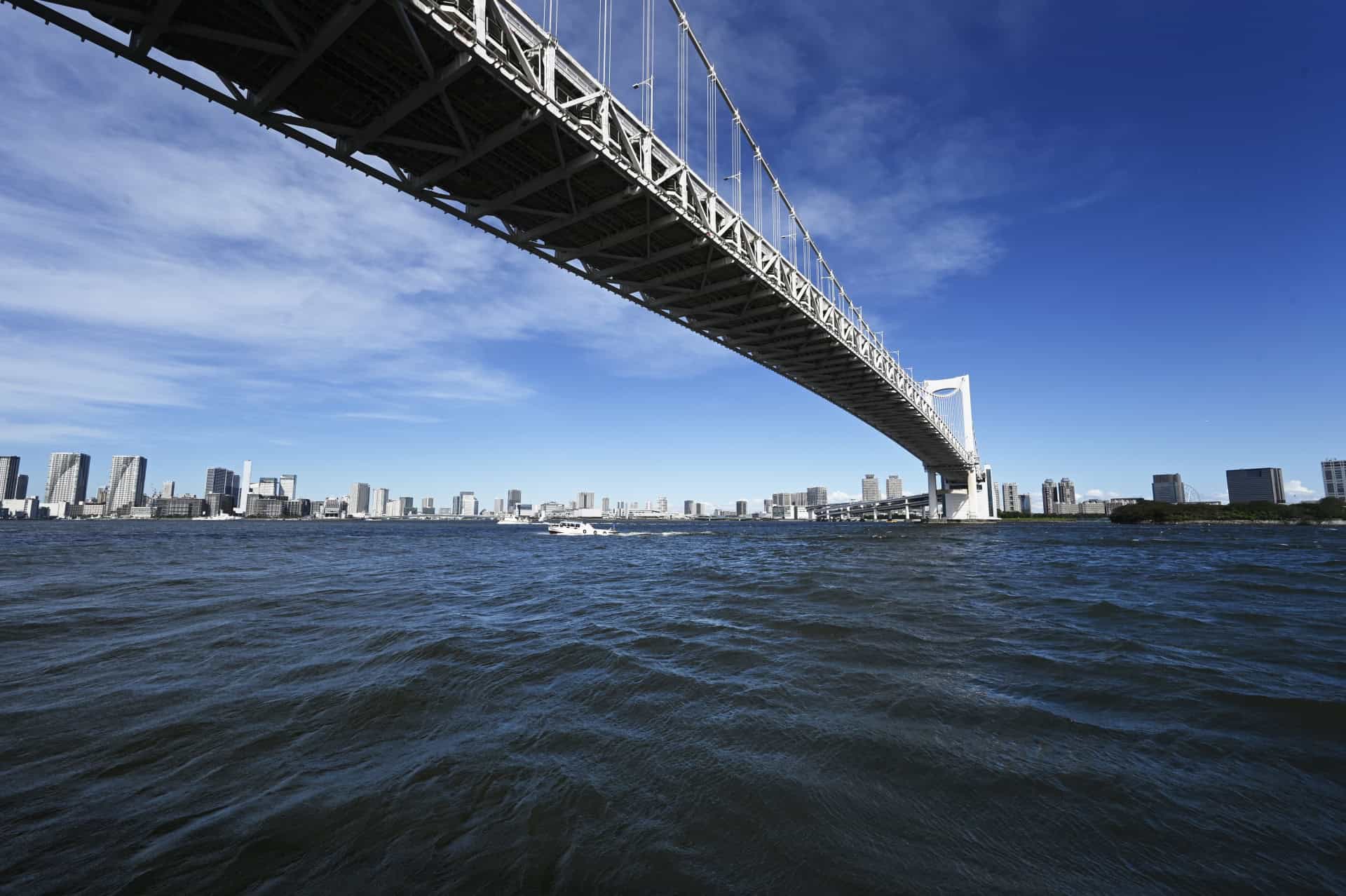
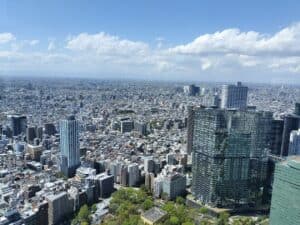


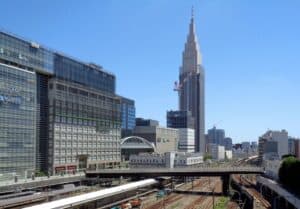
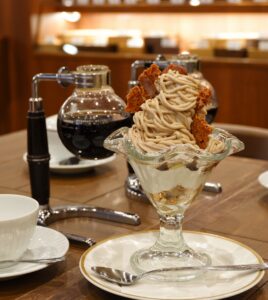
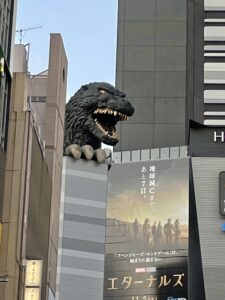
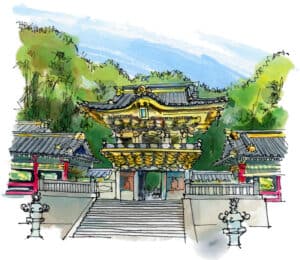
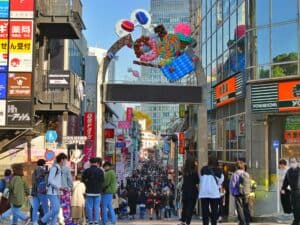
コメント